For her last interview as Fever Ray, Karin Dreijer Andersson discusses motherhood and creativity beside a guy with a knife in his back
The Knife's Karin Dreijer Andersson says goodbye to her one-album solo project
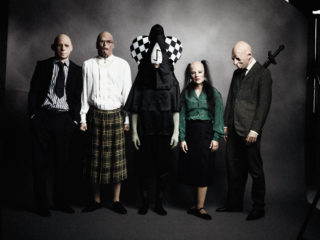
The Knife's Karin Dreijer Andersson says goodbye to her one-album solo project
It’s pissing down with rain in Brixton, London, and I’ve just been ushered into a starkly furnished dressing room, offered a place on either of two well-worn sofas, and told simply, “Karin will be along in a minute.” Last we saw of Fever Ray’s Karin Dreijer Andersson, she was accepting a Swedish Grammy for Best Artist, decked out in a parody of Lady Gaga’s head-to-toe red lace ensemble, with the addition of a mouthless, melted face mask. Her acceptance speech was a growling gargle that had us thinking she was going to vomit. Youtube it. There’s a bald rubber mask resting limply on a nearby table. I choose to focus on some socks drying on the window ledge instead.
It’s hard to know what to expect from this encounter. For all intents and purposes, Fever Ray is the new Bjork, with her penchant for decadent, artfully eccentric costumes, strikingly candid lyrics, filtered, elfin/goblin vocals, and eerie, evocative synth and beat-based music. The name Fever Ray is, in fact, Karin’s own description of her searing, icy sound. Her other guise is as one half of The Knife, a slightly more aggressive electronic project shared with her brother Olof, also a project prone to masks and vocal effects. In fact, I’m not entirely sure what Karin looks or sounds like. What I do know is that this is the third stop of a six-gig tour and that although I am sat waiting in a room with some socks and a creepy mask, I’m not waiting for my turn – this is the only interview Fever Ray is doing in London. After all, why get the press involved in what is more than likely just a final victory lap? That said, what am I doing here? I’m either about to have an audience with a demon-voiced melty mask, who will tell me in no uncertain terms that This Is It, or… Or what? The door opens.
“This is Karin, you have an hour.” The rubber mask and I have been joined by a slender woman in jeans and a big, cosy grey jumper with cats on it, who removes the socks from the window so it can close, checks the other window is shut, asks if I would like water or tea, and curls up on the other sofa, playing intermittently with a black elastic on her wrist or the ends of her auburn-blonde hair. This is Karin: the artist behind the complex character of Fever Ray, the haunting vocals, the naked lyrics, and the thrillingly complex electronic compositions. She speaks carefully, thoughtfully, frequently to the opposite wall, yet at the same time is completely open and honest. There is inherent warmth about her and a good-natured impulsiveness. I am talking to an intelligent, passionate artist, who, so it sounds, always has something in the works, and, so we hope, never shuts the door on a project.
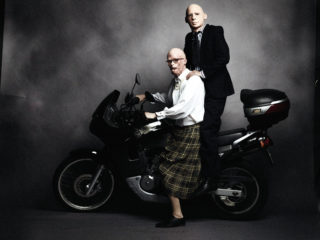
L&Q: I’ve heard a rumour that this is the last tour?
KDA: “For this album, yes, and I don’t know when the next album will happen, so it could be… I mean, we will not book any more shows for a very, very long time.”
L&Q: The same rumour was going round last year – that you would be playing your last shows.
KDA: “I never said last shows! [laughs] I don’t know who said that. We were thinking of closing down Fever Ray touring last year, but then we had a lot of energy left and there were things that were still interesting to continue working with on the stage. So this year we did one show in April, and these six shows in September… But none after that.”
L&Q: So if it’s just a six-show tour, why have these new costumes and characters been introduced?
KDA: “We just wanted to proceed. I’ve been working very closely with Andreas Nilsson, he is an artist who has been doing many videos for Fever Ray and The Knife, and also working on the live shows and we just wanted to continue, to find out where it ended on the last tour and make it progress. I think these new characters are a good inspiration for what will happen next after this run.”
L&Q: Somewhere between then and now, you and your brother wrote an opera as The Knife, ‘Tomorrow, In A Year’, based on Darwin’s ‘The Origin of Species’. How involved were you in that?
KDA: “It was only Olof and me who started it, having meetings and workshops with Hotel Pro Forma, and many discussions about what angles to explore and where to dig into it, but for the first six months it was mostly reading and research work. Musically I was involved everywhere, in some tracks less than others. We were working in Berlin, where Olof lives, and also Matt Sims, and Janine (Rostron) – in fact, all three live in Berlin! – so we were mostly working in Berlin and sometimes in Stockholm or Copenhagen, and we worked for two years. It was a long project.”
L&Q: Was that part of why Fever Ray took a break for a bit, or were you involved in both at the same time?
KDA: “It was pretty much at the same time. I mean, we were finished with the music in June last year, and that was when I was touring the most, I think. So, yes, both projects were happening at the same time!”
L&Q: When you first started Fever Ray, you seemed pretty adamant that there was no character, that you were just seeing where the music took you. But a character has emerged. Did working on two things at once affect Fever Ray’s character development?
KDA: “Oh yes! For me it had similarities. In Darwin, for example, time was something we discussed a lot because we wanted to work in different time spaces, like this very long time from the Big Bang until today, and also the time space of Darwin’s life, from when he was born until now, and something also very contemporary. That was something, I think, that in some way has affected the Fever Ray work, I can’t say how, but when we were discussing it and I was thinking about it a lot, how to relate to time, and when you talk in school about the time that humans have existed it’s like this [holds thumb and index finger a few millimetres apart] and the rest is like this [holding arms out as far as they can go] and it’s so hard to ever understand. I also read a lot of letters between Charles Darwin and his wife, and his ideas about society and how people worked made him seem really… human. He was a humanist and had very controversial ideas about what a human is and the way he and his wife looked upon family, it puts perspective on what life is today. It was interesting in so many different ways to study these concepts, and something quite rare for a group of musicians to do.”
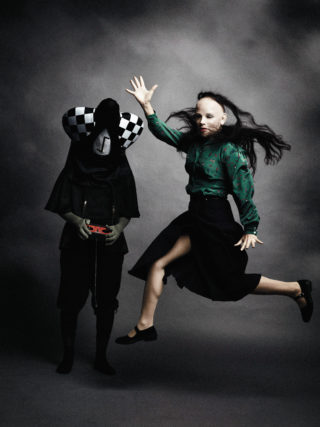
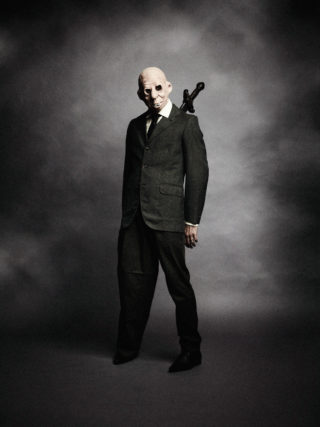
L&Q: Your lyrics are very personal, very human, paired with controlled, synthetic music. Does the music serve as a mask for some of the raw feelings to hide behind?
KDA: “It’s taking advantage of the ways of telling these things, how to get even more direct, making it clear, stating facts. I don’t see it as hiding, though that is of course one way of looking at it, but I think if you tell something through a character, or through a very synthetic sound, it gets even more intense, you boil it down to the only thing that’s needed to know or say. Sometimes I wish you could just… [searching] I just want very exact words, [laughs, having searched for the exact words to describe ‘the exact words’] to use as little as possible to say something big, to remove what’s not needed. I’m not into that, I like it when something is very clear, direct. For me, it’s facts, it’s like reading a map, which I like. I think a lot of things are so complicated around us, so it’s nice when something is what it is.
“When I wrote the lyrics for the Fever Ray album… It was six months in my life when I had been at home with a screaming baby – it’s a lot about that time of course. In Sweden, you are very isolated when you become a mother, it’s like, now must stay at home. Then, after six or seven months I went to my studio, and when I look back on it, it’s about that paranoia you get from being at home all of a sudden – you’ve had all the people around you, your friends, just disappear. In Sweden it’s not such a social life, it’s cold most of the year, you don’t meet people outside, you’re outside just to run to your car or run into the supermarket or something, and the summer is so short, about two weeks, and the other fifty weeks are cold. I think people are very lonely.
“And the second kind of isolation, when you become a mother, you’re just thrown into some kind of biological mess all of a sudden. As a feminist, everything is about gender construction, and then you meet people from these mothers healthcare institutions, and they deeply believe that all female humans are born just to raise and breastfeed children! And that was a huge shock the first time, I had lived a very free life before then, I had been playing music, but you’re not expected to go back to work, and most women don’t. All these well-educated women all of a sudden lose half their identity, and that was really frightening for me. [Heavy, thoughtful pause, then laughs,] Yeah, so the album is about that time!”
L&Q: It sounds terrifying.
KDA: “The problem is that you’re expected to act a certain way as a mother, and I deeply fight against that. My oldest daughter is seven now, past the hardest first years, and it’s fantastic, and I think it’s very unfair for women – and men – to have to handle having children in a certain way. Also I don’t think you should have this predetermined role, just because you are a woman. It’s very old-fashioned gender construction.”
L&Q: Has your involvement in feminism had an impact on your work, especially after such a frightening introduction to motherhood?
KDA: “Absolutely, and it’s something you have to go back to and study because it changes so much according to culture. We have a certain way of seeing feminism in Sweden, it poses interesting political questions, and that’s what I’m most interested in, class and culture are subjects I want to work with.”
L&Q: Are you into politics?
KDA: “I’m not part of a political party at all, no. [she says firmly]. Well, yes, a little bit. [laughs] There is a feminist party in Sweden, and they can’t get any money from the government for their campaign, so The Knife gave money to the feminist party and that got them really good publicity, and Benny Andersson, from ABBA, he gives them a lot of money every year, and that’s great.
“Also there’s a summer camp in Sweden, Popkollo, for girls only, to learn and play instruments, as well as music production and electronic music production. I was there for the first time this summer, to lecture about electro composition. It was fantastic. I think it’s really important because there are so few female musicians and producers. It was so hard when I was little – I still hate going into music shops, guitar shops, whatever. All these men just stare and stare at you and you feel like an idiot.”
L&Q: When did you start playing music?
KDA: “I started playing guitar when I was ten, and then I started my first band when I was fourteen, at school. When I was nineteen I started this high school indie rock band [laughs] and I’ve been playing ever since then.”
L&Q: Is it easier to work on your own than as part of a band?
KDA: “I don’t know… [giggling] I don’t know if you’d call it a band, working with my brother! [laughs] That is just working with one other person. Of course it’s easier to work on your own in one sense, but then you have to make all these decisions yourself, it’s so much more up to you and that can be really boring. You get really fed up with yourself. It’s really good to work with other people, and if that’s not in a band, it can be in a collaboration.”
L&Q: Have you had any collaborations as Fever Ray?
KDA: “We’ve been doing a track for a film, all five of us [the other four being the currently rather ghastly looking characters that are Fever Ray’s live band] have been writing a piece together – it’s the first time we have really been working all together. The other collaboration was The Knife doing ‘Tomorrow, In A Year’ with Matt and Janine, and I write lyrics together with Matt, and I have never written lyrics with anyone else before.”
L&Q: So about these new Fever Ray characters, the new concept, was that your idea?
KDA: “I knew I wanted a change. The things we did before, we had done modifications – I started off with a painted face and in a very shamanic or pagan sort of dress, then I turned into something that was more gothic. Still I was very human, I think. And now… I’m not. [laughs] It’s so interesting to try out how you experience and how you perform the music, through these filters, because for me it is very different. It’s very minimal, maybe. I don’t know but it’s a big difference and I didn’t want it to be… There’s nothing religious about it.
L&Q: Eh… What?
KDA: “I think some people thought it was, and I was a bit afraid that it was seen as a religious ritual, black magic or nature religion, which it’s just not about. [laughing, possibly at the expression on my face] So, now it looks like someone’s kicked off a party at the boring office gathering. [still giggling] No, we just wanted to take another turn and see how it changed things.”
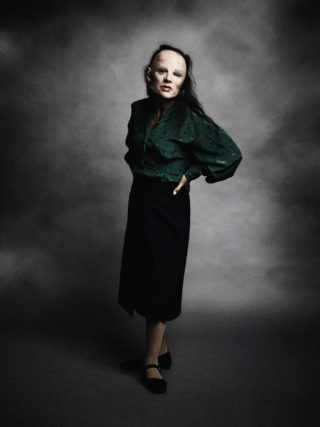
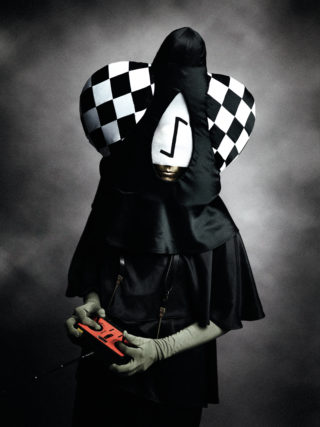
L&Q: According to the website, the band are now Wall Street Zombies and you are their Apocalyptic Puppet Master. Sounds good, I love it!
KDA: “Yes, me too! I’m controlling the capitalists from the stage – that would be great, I could press the red button.”
L&Q: Do you still play in almost total darkness?
KDA: “We have double the number of lamps now. But I think it’s important to find that balance, you don’t want to see everything on stage and it’s good to have your own ideas about what’s going on. It’s still a hard thing, with the live performance, what it’s really about. I think we need to start experimenting with it, because we’re not there to show our cool clothes, it’s not a fashion show. I really want to create something, to capture the whole room, to make the music more intense, and that goes for us on stage as well. If it goes well, it’s a fantastic way of experiencing music.”
L&Q: The last time I saw Fever Ray it was in a pitch black airport hangar just outside Rennes. That was quite a way to experience your music.
KDA: “That was our first time playing in France – our only time! We’re playing tomorrow in Paris, and we’ll see how it goes… French people can be really hard to… get. [laughs] We’ll see.”
L&Q: You’ve got a 7-inch out at the moment – a cover?
KDA: “We do three covers live, and one was released now, ‘Mercy Street’, a Peter Gabriel track. We’ve been playing it live for a while now and I wanted to put it out. We hadn’t finished a studio recording of it until a few weeks ago.”
L&Q: What made you decide to release it now?
KDA: “I like the 7-inch format, and I thought it would be nice to have something for this last run.”
L&Q: It’s not nice, this word, ‘last’… What’s next, after the tour?
KDA: “I will be writing music for a play, an adaptation of the Ingmar Bergman film The Hour of the Wolf. Andreas Nilsson is doing the set design, I’m doing the music and it’s a friend of ours directing. It’s exciting, Bergman is one of the top icons in Sweden, and as soon as it was published that we were going to be doing this, I got an email from the Ingmar Bergman Society, saying, ‘If you want to come and work at Ingmar Bergman’s house, on this island, where he had his study and which is now an artist residence, just let us know and you can come here and work for a few weeks on this project.’ It’s so strange, what doors open when you work on these highly cultural things.”
L&Q: Are you going to do it?
KDA: “I told it to the other two and they were like, [in a panicky, excited voice] ‘Yes! We have to go! It’s the only time we will be invited!’ [laughs] It’s very nice, because it isn’t a play already, so we have the freedom to do what we like. We will work with film also, and I said I wanted surround sound, they said, ‘Okay!’ We start on – What day is it today? Wednesday? We start in a week and it will open in March.”
L&Q: And after the play…
KDA: “I’m working with Olof too. We started last spring.”
L&Q: We’ll be hearing more from The Knife, then?
KDA: “Yes, I think so. We’ll see, we have just started with improvisations. We have improvisation sessions, [laughs] hours and hours of recordings, so we’ll see what, if anything, comes out of that.”
L&Q: Will these be Berlin sessions or Stockholm?
KDA: “He will come to Stockholm.”
L&Q: So you’ll get to spend some time with your kids.
KDA: “Yes, this year I haven’t been away much, but last year was horrible. It’s difficult when they start school, you can’t take them with you.”
L&Q: Have you taken them on tour before?
KDA: “My oldest one, she’s been with me for a few shows here and there. A lot of people in the band and crew have kids, and last year we took a few weekends where we brought all the kids, and mothers, fathers, girlfriends, boyfriends, all looking after everybody, it was lots of fun.”
L&Q: Not all staying on the same bus, I assume… (Fever Ray are living out of a bus on this tour, not liking the fuss and bother of hotels)
KDA: “Um… Yes! [laughs] The kids staying in the same bunk as their parents. It was really fun and it’s something I think they will remember forever.”
L&Q: This loneliness you mentioned before, it seems to be an integral part of Swedish culture, the sense of darkness and introspection, which is why Bergman is such an icon, and it’s certainly a big part of your music…
KDA: “Do you think it’s the climate?”
L&Q: Oh, yeah, the cold weather gives you lots of time to think, sometimes very existential thoughts. It’s where Swedes get that dark sense of humour.
KDA: “Yes, It’s very important to be able to laugh at misery, how could you live through it otherwise?”
L&Q: In a way, you’re doing that with these ghoulish parodies on stage, sending up miserable corporate suits.
KDA: “For me they are really scary – so unpredictable, people in suits. And the female character, in the kilt… I have family who are more upper class, who wore kilts and white blouses at Christmas and things like that, and my mother wanted us to fit in when we met with these people, so she made us wear kilts [laughs] and white blouses, and black, shiny shoes. I hated it so much, we had these things on, but we didn’t know how to wear them, couldn’t move, me and my sister, we felt so miserable. I really felt how hard my mother tried to fit in with these people – it was on my father’s side – and she didn’t get there. For me to see her disappointment, it caused so much anxiety. My sister, she never combed her hair, and with this white blouse [laughs] and the kilt, it was so wrong! So these characters on stage, they capture that kind of anxiety, the terrible people. You don’t know anything about someone who’s wearing a suit. And a tie…
L&Q: A slipknot, putting a noose around your neck before going to work.
KDA: “Yes, why would you want to do that? We’ll have to deal with that on the next album.”